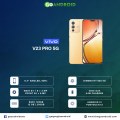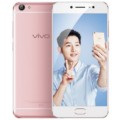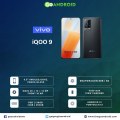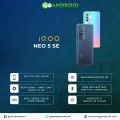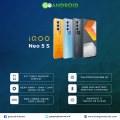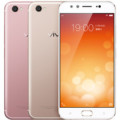Vivo Y25
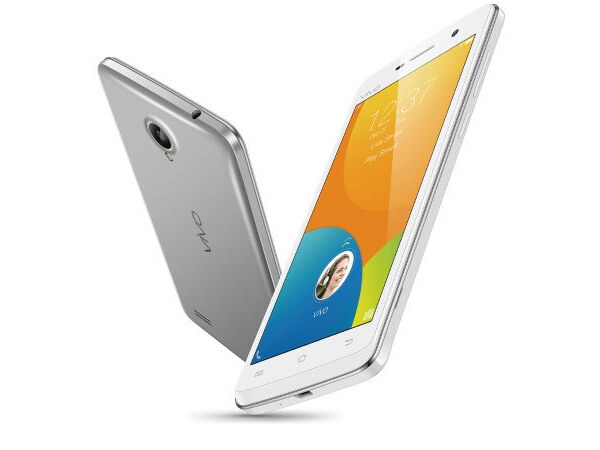










-
Processor: 1.3GHz quad-core MTK6580 processor
-
RAM: 1GB RAM
-
Storage: 16GB
-
Display: 4.5-inch
-
Camera: 5-megapixel / 2-megapixel
-
OS: Funtouch OS 2.1
The Vivo has launched their budget smartphone Vivo Y25 two days back. It will available at a priced of MYR 499 (roughly Rs.7,500).
Some key features of Vivo Y25 are:
Vivo Y25 comes with 4.5-inch IPS display. It has a display resolution of 480 pixels by 854 pixels. The smartphone packs a 1900mAh battery and it measures 130.70 x 66.40 x 9.20 (height x width x thickness).
The smartphone runs on the Android 5.1 Lollipop, based on Funtouch OS 2.1. It is powered by a 1.3GHz quad-core MTK6580 processor. The device has a 1GB of RAM. It houses 16GB of inbuilt storage, which can be expandable up to 128GB via microSD card. The Vivo Y25 is a single SIM (GSM).
As far as the cameras are the concern, the phone packs a 5-megapixel rear camera and the 2-megapixel camera at the front for selfies. It includes LED flash, Geo-tagging, touch focus, autofocus, video chatting.
Sensors on the phone include:
- Proximity sensor,
- Accelerometer, and
- Ambient light sensor.
Connectivity options have included:
- Wi-Fi,
- GPS,
- Bluetooth,
- USB OTG,
- 3G and 4G/ LTE.
Vivo Y25 - Specs
Network
Design
-
Type Design Type called form factor refers to a mobile phone's size, shape, and style as well as the layout and position of major components of phone. There are three major form factors seen in mobile phones => bar phones, folding phones and sliding phones.Bar
-
Dimensions130.7x66.4x9.2mm
Display
-
Display Type Display Technology => A number of display technologies and types used in mobile phones => TFT (Thin Film Transistor), IPS (In-Place Switching), OLED (Organic Light Emitting Diode), AMOLED (Active-Matrix Organic Light-Emitting Diode), Super AMOLED (an even advanced version of AMOLED), Resistive Touchscreen (Resistive touchscreens contain two layer of conductive material with a very small gap between them which acts as a resistance), Capacitive Touchsceen (Capacitive touchscreen technology consists of a layer of glass coated with a transparent conductor)IPS display.
-
Size4.5-inch
-
Resolution480x854 pixels
Software
-
Operating System OS => Every computer system run on a base software called Operating System (OS). Operating System controls all basic operations of the computer (such as smartphone, PDAs, tablet computers and other handheld devices). The Operating System allows the user to install and run third party applications (apps), apps are used to add new functionality to the device.Android 5.1 Lollipop
-
Skin UI or user interface of a device is the look and feel of the on-screen menu system. How it works, its color scheme, how it responds to button presses, all of these things are part of the user interface.Funtouch OS 2.1
Hardware
-
CPU CPU (Central Processing Unit) mostly known as processors, CPU processes instructions in order to carry out certain functions that make your device operate properly. Processors are often described as the brain of computers, smartphones and tablets, Smartphones and tablets rely on processors to carry out their every task, Processors are an incredibly important factor in selecting any type of computing device, including your smartphone.1.3GHz quad-core MTK6580 processor
-
RAM (Memory) RAM (Random Access Memory) is a type of computer memory that can be accessed randomly, any byte of memory can be accessed without touching the preceding bytes that allows information to be stored and accessed quickly from random locations. RAM is the most common type of memory found in computer systems, smartphones, tablets and other electronic devices.1GB RAM
-
Internal Storage Internal Storage is a data storage space (flash memory) mostly used in smartphones, tablets and other electronic devices where operating system, apps, music, photos, videos, files and other user data Is stored.16GB
-
Card Slot Memory Card Slot is a special slot for inserting a memory card. Memory cards allow you to expand the phone's built-in memory, A memory card (sometimes called a flash memory card or a storage card) is a small storage medium used to store data such as text, pictures, audio, and video, for use on small, portable or remote computing devices such as mobile phones, mp3 players, digital cameras.up to 128 GB
-
Sensors Sensors are electronic components that detects and responds to some type of input from the physical environment. The specific input could be light, heat, motion, moisture, pressure and location, The output is generally a signal that is converted to use in computing systems, a location sensor, such as a GPS receiver is able to detect current location of your electronic device.Proximity sensor, Accelerometer and Ambient light sensor.
Camera
-
Primary Camera is able to capture photographs and usually videos, The most important characteristics of a camera are the resolution (measured in megapixels), lens focus type (fixed or automatic), higher megapixel cameras are known to capture higher quality photos, but not always a good measurement of the photos quality.5-megapixel
-
Camera FeaturesLED flash, Geo-tagging, touch focus, autofocus.
Battery
-
Battery Type Battery Type => Cell phones run on various kinds of batteries depending on the manufacturer, phone size or shape and features. There are basically four types of cell phone batteries => Lithium Polymer, Lithium Ion, Nickel Metal Hydride and Nickel Cadmium.Li-Ion (Lithium Ion)
-
Capacity Battery Capacity is a measure (typically in Amp-hr) of the charge stored by the battery, and is determined by the mass of active material contained in the battery. The battery capacity represents the maximum amount of energy that can be extracted from the battery under certain conditions.1900mAh battery
Connectivity
-
Bluetooth Bluetooth is a wireless communications technology for exchanging data between mobile phones, headsets, computers and other network devices over short distances without wires, Bluetooth technology was primarily designed to support simple wireless networking of personal consumer devices.Yes
-
Wi-fi Wi-Fi is a popular wireless networking technology using radio waves to provide high-speed network connections that allows devices to communicate without cords or cables, Wi-Fi is increasingly becoming the preferred mode of internet connectivity all over the world.Yes
-
Infrared Infrared connectivity is an old wireless technology used to connect two electronic devices. It uses a beam of infrared light to transmit information and so requires direct line of sight and operates only at close range.
-
USBYes
-
GPS GPS The Global Positioning System is a satellite-based radio navigation system, GPS permits users to determine their position, velocity and the time 24 hours a day, in all weather, anywhere in the world, In order to locate your position, your device or GPS receiver must have a clear view of the sky.Yes
-
NFC NFC (Near field communication) is a set of standards for smartphones and similar devices to establish peer-to-peer radio communications with each other by touching them together or bringing them into proximity, usually no more than a few inches.
-
Headphone Jack

